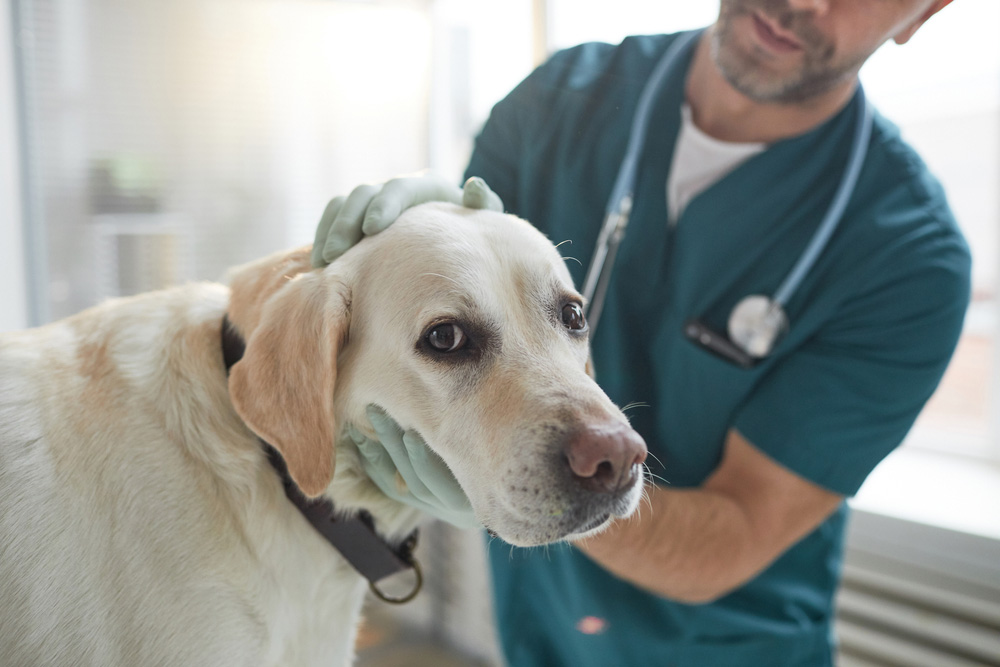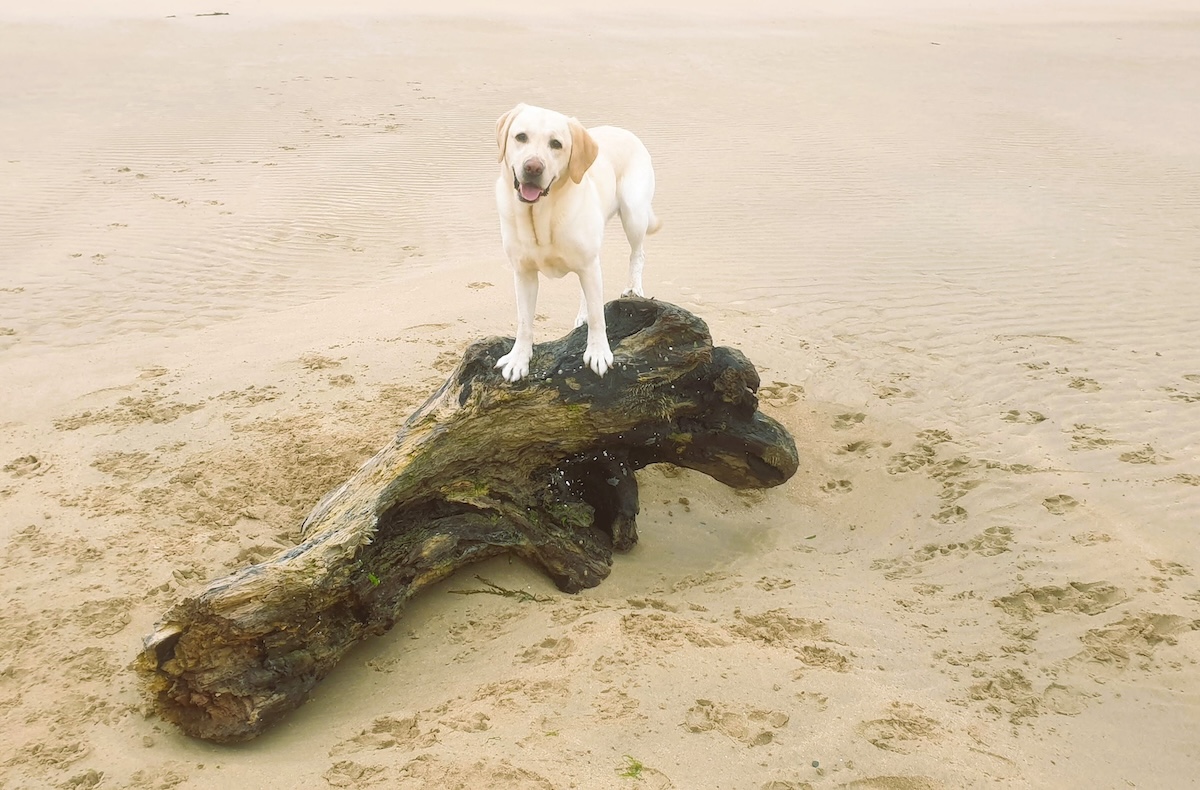Click to Skip Ahead
Several foxtail species grow abundantly throughout North America, and your dog will likely encounter them outdoors. It’s important to be aware of the dangers of foxtails, especially if your dog plays outdoors in an area where foxtails commonly grow.
Foxtails are bad for dogs when the seeds become embedded in their skin or ingested, as they can migrate through the body.

Dangers of Foxtails for Dogs
Foxtails are dangerous for dogs and could put their health at risk. These grasses seem to pop up in spring and summer before dying off in fall. Foxtails are most dangerous when they have dried out and hardened during the warmer months.
If you live in an area where foxtails are known to grow, you should take the necessary safety measures to protect your dog when outdoors. Your dog is likely to encounter them when out on a walk or hike with you.
Spikelet Migration
When the spikelets come into contact with your dog, whether through their skin or being inhaled or ingested, they burrow in and start tunneling in a spiral motion. In most cases, they won’t make it very far; however, there are cases of foxtails migrating into the body cavities and the central nervous system.
Because of their ability to migrate, foxtails can cause disease in any organ system in the body. As they migrate, the grass seeds trigger an inflammatory reaction in the body, and also bring with them bacteria, leading to infections and abscesses.

Identifying Foxtails
When a foxtail first attaches to your dog’s skin and burrows in, it is visible from the outside and can be easily removed. Later, it penetrates deep into a dog’s skin with an open wound visible and will need to be removed by a veterinarian under anesthesia. The foxtail needs to be removed in its entirety; otherwise, problems can still occur from remnants.
Sometimes, foxtails are not detected immediately, and the entry point heals over. In those cases, swelling under the skin due to an abscess can be noticed. If the foxtail migrates, other clinical signs can occur, depending on the location it ends up in.
Harmful Effects
Foxtail seeds can easily get stuck in a dog’s eye or ears, leading to redness and severe irritation, even causing permanent damage over time. Dogs could accidentally inhale foxtail seeds while running through fields and panting.
In the nose or upper airways, they cause sneezing and coughing, respectively, as well as inflammation. In the lower airways, they are likely to cause life-threatening conditions like an infected chest cavity (pyothorax) or punctured lung (pneumothorax).
If your dog attempts to eat the foxtails, they could get stuck in their mouth, esophagus, or stomach before they start their burrowing journey. This could lead to infections around the head and neck or even the abdominal cavity (peritonitis).
If your dog does pick up foxtails, try to get the issue sorted as early as possible for the best outcome for your dog. Once the foxtail starts migrating, it can be hard to find and even more challenging to remove.


How Many Dogs Die from Foxtails?
No definite number of dogs have been reported to have died from foxtails each year. According to the Pet Poison Helpline, fatalities occur every year. One veterinary teaching hospital saw 791 cases of foxtail foreign bodies over a 10-year period.
Of these, a small number of animals had life-threatening signs and needed advanced imaging, endoscopy, or surgery to recover. The retrospective study also showed that dogs are more commonly afflicted with foxtail conditions than cats.
Over the last few years, veterinary professionals have issued several warnings about the serious health risks foxtails pose to dogs and other animals.

How Can You Prevent Foxtails?
- Keep your yard free of tall grasses.
- Trim your dog’s fur. Long coats are much more likely to trap grass seeds. It’s also easier to spot and remove foxtails with short coats.
- If you notice foxtails on your walk, don’t let your dog run through them. Keeping them on a leash in unfamiliar areas can help you control this.
- If you cannot keep your dog out of foxtail grass, use protective gear like boots and safety nets to keep the spikelets off them.
- Inspect your dog thoroughly and comb them to ensure they don’t have any foxtails on them after walks.

What Should You Do If You Notice Foxtails on Your Dog?

- Examine your dog’s skin, ears, eyes, mouth, and paws closely to locate where each foxtail seed is embedded.
- If the foxtail seed was only recently embedded, you can try removing it with tweezers. This is usually only possible if it is only slightly lodged in your dog’s skin. You want to be cautious about removing the foxtail seeds. If they are in your dog’s eye, take them to an emergency vet instead.
- Once you have removed the foxtail seeds with tweezers, clean the area with a mild antibacterial veterinary-approved antiseptic. If there is a wound or the skin is red or swollen, visit a veterinarian.
- You should monitor your dog closely for any abnormal behavior that could indicate they have embedded spikelets somewhere. Sneezing, pawing the face, head-shaking, licking, gagging, and scratching are common signs.
- If the foxtail seeds are embedded deep into your dog’s skin or have been inhaled or ingested, you should take your dog to an emergency vet. The sooner the foxtail seeds are removed, the better your dog’s chance of a speedy recovery.
If your dog has been around foxtails and is showing the signs below, they might have ingested or inhaled them or have foxtail seeds stuck somewhere.
Signs Your Dog Ate Foxtails
- Excessive pawing at the face
- Gasping or heaving
- Difficulty swallowing
- Difficulty eating or drinking
- Excessive sneezing and coughing
- Head-shaking
- Weepy eyes
If your dog has foxtails embedded in their body, it’s important to take them to an emergency vet. Prompt treatment can help minimize the number of serious complications your dog is at risk of after ingesting foxtails.
Based on the situation, your veterinarian will make a plan to remove the foxtails from your dog’s system. Those located superficially could be removed under anesthesia but sometimes, endoscopy or surgery will be required.
You should not attempt to induce vomiting or try to remove the foxtails from your dog’s throat yourself. You could end up doing more harm than good.

Conclusion
Foxtails pose several serious health risks to dogs. These nasty grasses have barbed seeds that can become embedded in most parts of a dog’s body and cause pain and infection. The spiral part of the seed allows the seed to continue moving and spread bacteria that can cause infections.
Furthermore, untreated foxtail seeds can cause organ damage and other problems related to the location of the seed. As they migrate through the body, they can end up almost anywhere. It’s essential to examine your dog after they have walked outdoors where foxtails are growing.
However, you should stay clear of those areas and use other preventative strategies. If you supervise your dog when they are roaming in open fields or meadows, you can stop them from coming into contact with foxtails.
Featured Image Credit: MabelAmber, Pixabay










